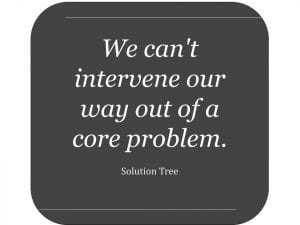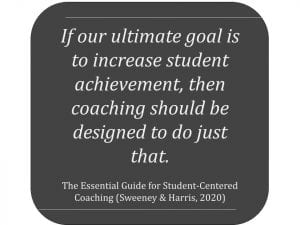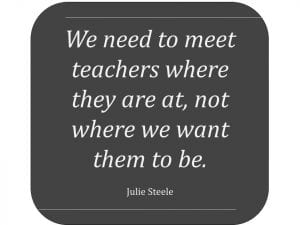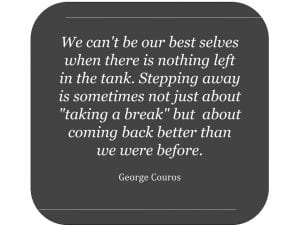So. Many. Thoughts. Mostly Unconnected.
Challenges and Connections
This week has brought a variety of challenges, and has been a reminder of why it’s so important to maintain an arsenal of positivity. In an April 4 post about Gratitude, I wrote, “Maintaining a positive mindset is tough to do during challenging times, all the more reason to establish and nurture the habit.” This week has also been a reminder about the importance of relationships, one of my top three core values, something I wrote about last week. Clint, Kate, and Deb – the three of you don’t even know each other, but all three are educators I have had the extreme pleasure of working with, are people I get to call friends, and remain in the category I fondly title, “The BEST there is in education.” A HUGE thanks to all three of you, who in your own ways, picked up a girl who was struggling. The following quote from the book, City of Girls, by Elizabeth Gilbert (which received a rare 5 stars from me), kept coming back to me this week:
 “The world ain’t straight. You grow up thinking things are a certain way. You think there are rules. You think there’s a way that things have to be. You try to live straight. But the world doesn’t care about your rules, or what you believe. The world ain’t straight, Vivian. Never will be. Our rules, they don’t mean a thing. The world just happens to you sometimes, is what I think. And people just gotta keep moving through it, best they can.”
“The world ain’t straight. You grow up thinking things are a certain way. You think there are rules. You think there’s a way that things have to be. You try to live straight. But the world doesn’t care about your rules, or what you believe. The world ain’t straight, Vivian. Never will be. Our rules, they don’t mean a thing. The world just happens to you sometimes, is what I think. And people just gotta keep moving through it, best they can.”
Collective Efficacy
I wrote about collective efficacy a few weeks ago, and have a few follow-up thoughts about it. First, I want to revisit part of what was written: “’When teams believe and are confident in their abilities to make an impact, they tend to perform better. This phenomenon—which is called collective efficacy—has a powerful impact to make good teams great. In education, collective efficacy influences student achievement and can create positive change in schools.’” ( ASCD (Association for Supervision and Curriculum Development.) In other words, when the people in an organization are driven by a common purpose, have a common understanding of the purpose, and have mutual accountability to uphold that purpose, collective efficacy is in place.” When looking at John Hattie’s work, collective efficacy has an effect size of 1.57. (These numbers change as new data comes in, and I can’t find a date on the website linked here. I have also seen an effect size of 1.39 for collective efficacy in The Essential Guide for Student Centered Coaching, Sweeney and Harris; this data is from June of 2019.) Let’s put that into perspective by looking at what Corwin’s Visible Learning reports about Hattie’s effect sizes: “The average effect size was 0.4, a marker that represented a year’s growth per year of schooling for a student. Anything above 0.4 would have a greater positive effect on student learning.” Whether the effect size of collective efficacy is 1.39, 1.57, or somewhere in between, we can conclude that it has a substantial impact on student learning, knowing that 0.4 is our guidepost.
One of the challenges that came my way this week was around a mistake that I made, and was rather blind-sided by the mistake, even though I had suspicions that I had messed up, yet again! In recommending teachers take a course offered by an organization outside of our current reading curriculum, I inadvertently encouraged a step away from, or a distancing from, embracing our curriculum. In my estimation, this has the potential to blow holes in our PLC process, and may possibly encourage an unhealthy competition rather than working toward collective efficacy. I’m a terrible estimator, so let’s hope and pray my estimation is completely incorrect. There is no doubt, all teachers want the best for their students, and will do anything to support them. When we see the potential for propelling learning with a program, we jump at it. Of course we do! My fear is that in subscribing to the routines suggested by a different program, we will adopt a mindset that sounds like, “See, this program is better than the one we adopted.”
Let’s face it, there is no perfect curriculum. If there was, everybody would have it. That’s not to say that curriculum doesn’t matter; curriculum absolutely matters. That’s why we carefully select the curriculums we use. Rather than moving away from our curriculum (and I may be completely incorrect with this assumption about what may be happening), let’s embrace what we have and keep growing in our implementation. It’s a complex and tough-to-implement curriculum (as worthwhile curriculums are); we are not going to be well-versed in implementing it in Year One, or Two… or Three, and nobody should expect us to be. Let’s get good at what we have in front of us, let’s confront our stumbling blocks together, and let’s trust that the mistakes we make will only make us stronger.
One might ask why I ever encouraged the other program. There were several reasons: 1) it’s an excellent program, comes highly recommended, and produces great results 2) it would serve as a means to add “tools to our teaching belts” 3) it would enhance our intervention supports, (not implement as core instruction). You see, this is where I went wrong: our time and energy needs to be spent on improving CORE instruction. We often hear the following from Solution Tree: “We cannot intervene our way out of a core problem.” This is not to say that intervention should be ignored, or that we should not add tools to our belts, but the path to reducing the numbers of students served in intervention is paved with building robust core instruction. As a nation, we’ve been beefing up intervention programs for years with the same results: we are a nation with only 35% of our 4th graders at or above reading proficiency, according to NAEP. 35% proficient. How is that OK???

Credibility… or Lack Thereof
Since this post is titled “Random Ramblings,” I’m taking liberty with hopping from topic to topic. Another challenge I’ve been grappling with this week is knowing that I may be perceived as lacking credibility when it comes to implementation of our reading curriculum since I have not taught it in my own classroom. It was adopted after I became an instructional literacy coach. Even though in my heart of hearts, I know better: good coaching is good coaching, I still let this perception of lacking credibility take hold in my mind. The best I can do is keep plugging away with my actions, not just words, in my work with teachers. As outlined by Sweeney and Harris, in both The Essential Guide for Student Centered Coaching and Student-Centered Coaching, The Moves, when instructional coaches keep their work focused on promoting student learning, the content (math, English Language Arts, science, social studies…) does not matter. The goal that binds the teacher and coach together is student learning. Coaching is not about being the expert in the content area, it is not about fixing teachers, it is about propelling student learning.

Student-Centered Coaching
A highlight from this week has been attending a training titled “Foundations for Student-Centered Coaching.” The training, based on Sweeney and Harris’s work, was led by the one and only Julie Steele. My new goal: I want to be Julie Steele. 🙂 Julie has held many titles throughout her years in education; she is currently an education consultant for Diane Sweeney (hope I’ve captured that correctly!), and is phenomenal at what she does. Each time Julie said something, it was my new favorite thing she said. Seriously! If I had to pick one take-away from the training, though, it would be the following, “We need to meet teachers where they’re at, not where we want them to be.” There is SO MUCH packed into this statement!!! It may cause me to revise my list of my coaching beliefs. My take-away: we know that teachers came into this profession to help students; they are certainly not here to cause harm. We also know that there are many factors that feed into teacher quality, or lack thereof. One factor that I have reflected on, and may top the list, is that change is hard. Whether the factor is fear of change, lack of time to access quality professional development, or any number of factors, it is the coach’s job to intuit where the teacher is at. And while doing so, keep every conversation focused on how coach and teacher will impact student learning. A true coaching cycle is not focused on instructional strategies, but will utilize effective instructional strategies during the cycle to impact student learning. Improving teacher efficacy will naturally occur when robust coaching cycles are in place, but again, the ultimate focus is on student learning.

Slow the Pony
In my excitement to kick off the new school year, I have been planning to launch coaching cycles, as soon as possible, with some of our new teachers in the district. Our two days of student-centered coaching training came at just the right time. The advice received there was to let teachers establish routines, get to know their students, and (I’m adding this part) grapple with all that there is to launching a new school year. After the dust has settled (4 – 6 weeks), it is time to get coaching cycles up and running. That’s not to say that instructional coaches can’t support what is happening in classrooms during that initial 4 – 6 weeks; there is certainly plenty we can be doing to support teachers, but the real work of engaging in a true student-centered coaching cycle is best reserved for the second month of school or so. I will heed this advice by “slowing the pony” I’ve had racing to the start-of-the-school-year line.
Bill the Biker
As previously indicated this post is full of random thoughts, so I’m once again taking liberty to write about another happening from this past week. My husband, Bill, was able to spend the week in Sturgis, South Dakota with some good friends. He actually returned home the day that the 81st Sturgis Motorcycle Rally launched, so he was there for the pre-rally, and enjoyed some great riding in the hills of South Dakota. Why does Bill get space in the blog this week? He is a lesson in the importance of taking breaks. Bill doesn’t take breaks from work often, something the two of us have in common, I suppose. In the months leading up to the trip, he had many reasons why he shouldn’t go, all work-related. In addition to the work-related excuses, we had just spent four days at Rathbun Lake, so this was adding to some time off of work. With much prodding and encouragement, he reluctantly decided to make the trip, and had a great time. It’s not that he didn’t think he would have fun; he was just letting his workload be the excuse for not going. As it turns out, and as we all know, the work will still be there when we get back. And the work was still here… and he was up early this morning to get back at it, but I know he’s better off for having taken time away. I suppose this falls in the category of self-care, which we need to make a priority so that we can be our best selves for others.


Bill and friends in Sturgis, South Dakota